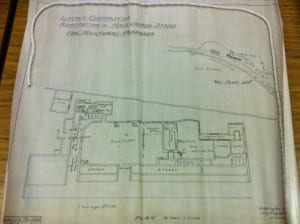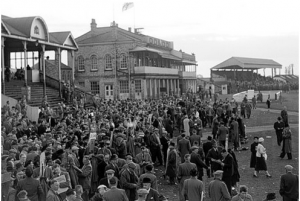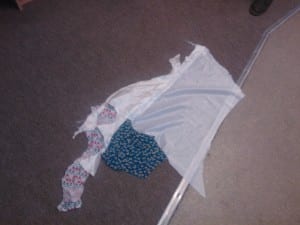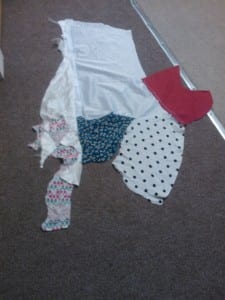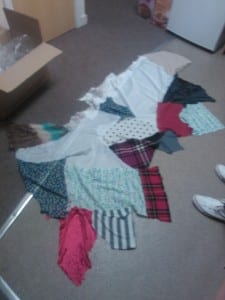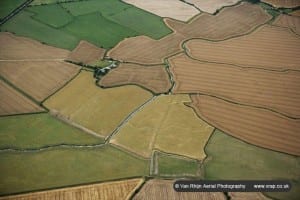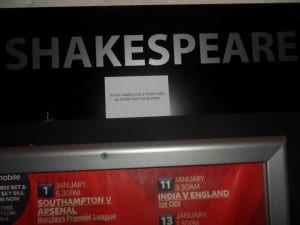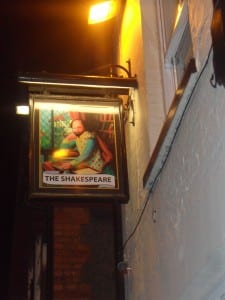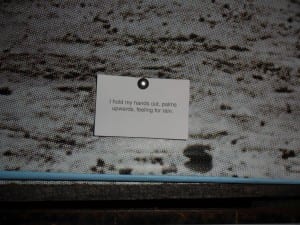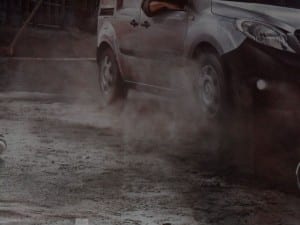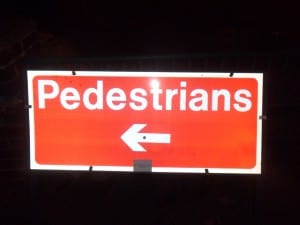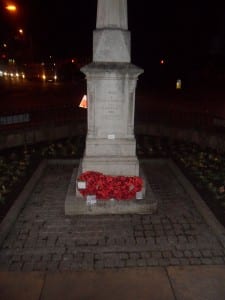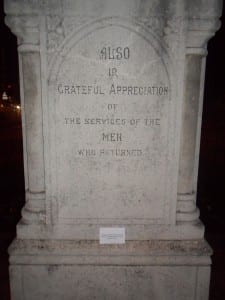Today for the second part of our lecture we were told to explore the grandstand in our groups, and while we were there we had to create a minute performance to share with the rest of the class for next week. Instead of going to the Grandstand my group and I decided to go to the West Common; which is the field across the road from the Grandstand where the horses would have actually raced 240 years ago. One of the major factors why we wanted to go over to the West Common is because the field is inhabited with horses; we wanted to experience the stench of the horse and observe the horse itself. The motivation behind this was the fact as a group we wanted to incorporate something to do with the senses and horses. One of the main reasons why I personally wanted to go to the West Common today was to examine the Grandstand from the other side of the road; I had a desire to observe the Grandstand from the perception of what it was like from a horses’ point of view.
However when we got to the West Common we did not think about the terrain of the field, once standing in the muddy space that’s when we realised it had been obviously raining sometime previously . Anyway despite the weather and the landscape we hiked through the field with the mud squelching underneath our feet. Sometimes we slipped, slid and got even got stuck on the terrain.
We attempted to get about as close as we could to the barriers but we had to stop as the ground was too wet; some of the group members had already ruined their shoes by stepping on a piece of terrain and getting their foot soaked with the slushy mud as it was unsafe to stand on that part of the grass.
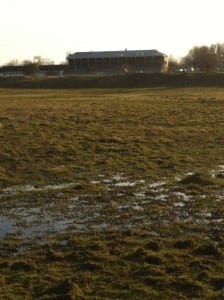
27.Feb.2013
When we started heading back to the way we came we had to change our route as a horse had seen us and started to move towards us. This was a terrifying experience, we decided to split the group and to leave the West Common as soon as we could, to attempt to move quickly away from the horse we climbed a fence, when I was trying to get off the fence I panicked as the horse was getting closer to us in result of this I ended up stepping on a really slushy piece of terrain in which my foot got completely submerged in a puddle of mud; this went right through my shoe into my sock.
Luckily we all managed to survive this experience, well just! Once I had got to a safe part of land away from the horse I turned my back to see where the other members of my group were. Directly behind Eloise and Emma the horse had started to pick up speed, before they knew it the horse was in front of them. The horse started walking back to where the other horses were, stopped looked at the girls with a miserable look in its eye and then started to head back from the direction we had just come from.
With this emotional experience, we wanted to create a performance demonstrating the sheer panic that we felt as a collective. For next week’s performance we want to reveal to the rest of the class our journey exploring the West Common. We are thinking about getting the audience to line up in the dark, and as a group we are going to come up behind them and vocalise a horse sound in their ears; this is to share to the rest of the class the ambiance of the horse coming towards us to enhance this atmosphere we are thinking of getting some coconut shells and creating the sound of a horse trotting.
Mike Pearson states that ‘Performance can be employed as an effective research procedure in interdisciplinary approaches to landscape’ ((Pearson 2011, Why Performance)) I believe that this really relates to our West Common journey piece that we are going to reveal to the rest of the class next week. After experiencing the West Common terrain I have changed my mind on the idea of having horse manure in the room to create the stench of a horse as I have think I have seen enough manure to last me a life-time.

